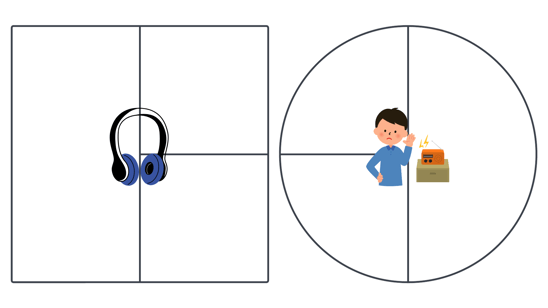The art of value delivery: differentiation in a saturated market
According to a survey by Salesforce, 84% of customers consider the customer experience as important as the products and services offered by a company.
5 min read
Por Sergio Gutierrez | Sep 21, 2022
By focusing on the customer experience, companies generate greater loyalty from their buyers, grow their brand presence and, therefore, their revenue, reduce their conversion and service costs, and many other benefits. However, not everyone is clear on the steps that need to be taken to make their business customer-centric.
Transformation is a task that requires dedication, review of business policies, harmonization between departments, alignment of strategic objectives, and, in some cases, redefinition of processes. The good news is that you can do it in stages and that several methodologies and tools help make the work easier and more targeted.
An example is the Value Proposition Canvas, a tool created by Alex Osterwalder to ensure that our products and services meet customer expectations and needs. This blog tells you what this tool is all about and how to use it to design better customer experiences.
Index
Value Proposition
The value proposition comprises elements that, when analyzed, help formulate a unique promise to the customer, thus being the reason why the customer will choose one business over another.
It is not a slogan but a powerful tool based on the effort to understand the expectations and needs of a market segment so that we can design human-centered products and services.
Why is this important? Because the customer is not interested in the performance of a business concerning its competition, the only thing that matters to them is to find a product or service that improves their quality of life by making it more accessible, so out of all the value propositions, they will choose the best one.

Value Proposition and Customer Experience
Every time a person interacts with our brand, through marketing campaigns, the website, salespeople, customer service, and the product or service, they accumulate a series of emotions that, in the end, will translate into a good or bad experience.
Customer Experience refers, then, to the general perception that our performance as a business generates in the customer. But why is it important? Today, with access to the Internet and diverse options, customers have the resources to search and shop for themselves. If their experience is good enough, they will develop trust, confidence, and loyalty to the company.
In other words, if we don't devote effort to improving the experience we deliver, not only will we fail to grow our business, but we may lose our customers to the competition.
While a correctly defined value proposition addresses the needs and expectations of a customer, not only of the product or service they are acquiring but also of their experience; an incorrectly defined value proposition can be useless and, in the worst case, generate chaos by not being aligned with what the customer expects to receive.

How to design a Value Proposition focused on Customer Experience?
Designing a human-centered value proposition is not complicated. However, for those who do not know where to start, it is vital to take into account some considerations.
1. The value proposition comprises the buyer profile and the value map, each with its respective elements.
Buyer profile
Value map

2. The value proposition must be based on actual needs, expectations, and frustrations, not assumptions.
The construction of the value proposition can be carried out at any time. However, it is advisable to learn who you are designing for, even if this lengthens the process; this implies not only having a general notion of the buyer but also understanding the context.
Why does this person need the product or service? What are their reasons for buying? What emotions do they feel during the process? Who is involved in the decision? What are their responsibilities and concerns? How and when will they use the product?
The truth is that it is challenging to develop a product or service for someone without engaging with that person beforehand. Assumptions are an excellent way to give direction at the outset, but without factual information, our proposal may not provide value to the customer. A helpful methodology might be the following:

3. To be built, multidisciplinary teams must be formed, involving people with the power to make decisions.
This exercise is the basis of the business model, which will define the strategy to be adopted by the organization to capture, generate and deliver value to its customers. For this reason, the conversations around the development of the value proposition must be heard by the people who can shape the structure and operations of the company.
On the contrary, the strategic vision of the business, the operational knowledge of various departments, and the experience of those who are closest to the customers should be brought together to form a team where everyone has different points of view and ideas to contribute and evaluate so that the proposal makes sense and does not remain in one department.
4. The value proposition is an iterative and continuous improvement exercise.
The market evolves. People change their motives and emotions, decision-makers rotate, and responsibilities transform. While the Journey will not necessarily change, expectations and goals, at every stage, should be constantly evaluated to understand behavior and improve the customer experience.
An excellent way to stay on top of this is through data collection. This way, we can study the information and identify patterns that help us make decisions for the future. According to Hotjar, 45% of companies that lead in Customer Experience define their strategies based on customer feedback, which is also interesting because as a company goes from being ignorant to mature on this topic, their perception is that customers have eight times fewer frustrations regarding the service/product experience.

What should be clear from this blog is that the value proposition is a promise to customers; it is the reason why they choose one business over another. It must be human-centered and address a customer's needs, expectations and frustrations towards a product, service, and the surrounding experience.
To design a value proposition that generates a good customer experience, you must consider four things:

According to a survey by Salesforce, 84% of customers consider the customer experience as important as the products and services offered by a company.

If you have ever googled "business model", "value proposition" or similar terms, you will have come across Strategyzer. Strategyzer is a strategy and...

Let's first talk about the value proposition, what is that? Simply put, the value proposition of your business is that "something" for which a...